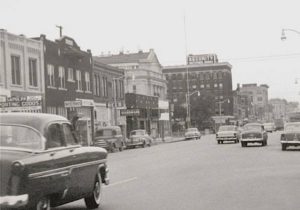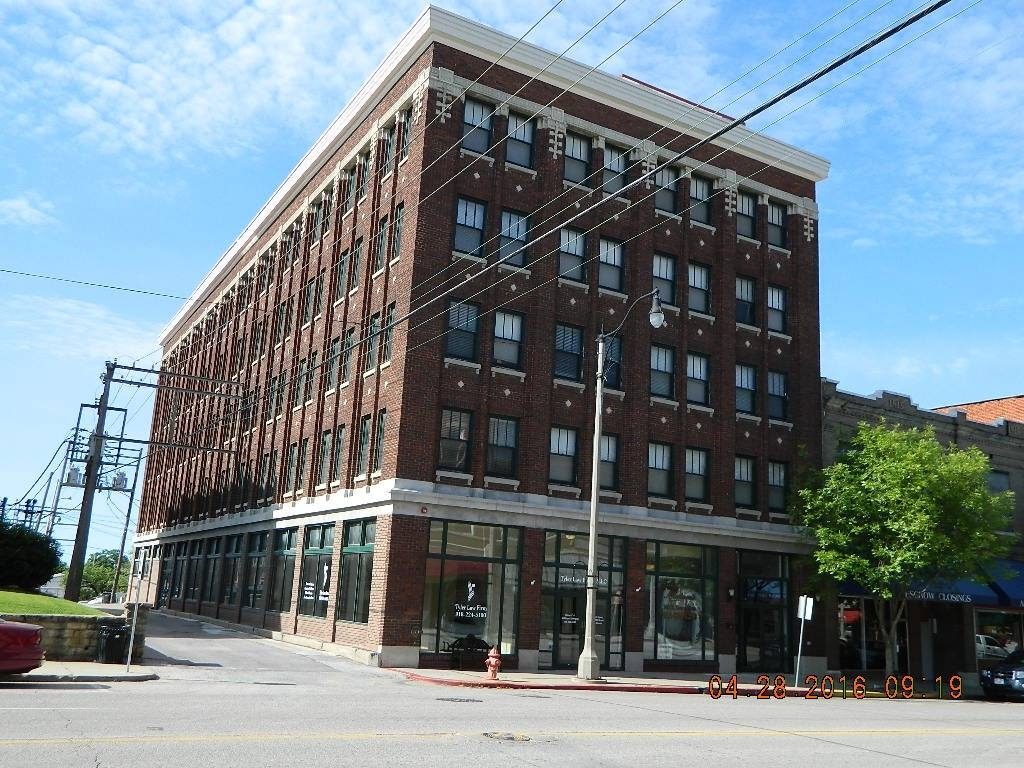Besides the 32 apartments and their occupants, the Wells Building at 208-210 East Dewey (Route 66) in Historic Downtown Sapulpa contains a lot of local history—oil history, black history, native American history, business history—bank and lawyer history.
According to records and articles on file at the Sapulpa Historical Museum, the Wells Building, originally the Clayton Building, was built in 1918 in the heart of downtown Sapulpa with royalty money from the discovery of oil in 1905 on the Ida Glenn farm (present day Glenpool in Tulsa County).

It was constructed in 1917-18 by Manhattan Construction Co. with two architects Popkin and Larry Rooney.
Original owners were Ernest [William McKinley] Clayton and his sister Bessie, Creek (Black) Freedmen who used their profits from the Glenn Pool to finance the project.
As for Black history, the man who directed the construction of the building and managed its initial operation was Henry Lowrance, born to a black slave family in 1864.
“As guardian of his step grandson, William McKinley Clayton and his granddaughter Bess Clayton Fondreaux [were] heirs to the large Clayton Estate,” states one history article, Lowrance was “instrumental in erecting one of the largest business buildings in Sapulpa.”
The building featured retail shops on the first floor including popular news stand, with the upper four floors housing professional offices.
By the 1950s it had become the home of Security National Bank complete with such modern features as drive-through deposit and withdrawal windows.
Ed and Earlene Wells bought the building in 1981 after the original Wells Furniture store burned. Wells operated the furniture business on the ground level and leased out space for offices and business throughout the upper floors.
The Clayton Building with the huge “Security Bank” sign on top was referred to as the Security Bank Building. It soon became known as the Wells Building. Ed and Earlene owned and operated it until their retirement.
The building was sold to Gary L. Stenson Properties and refurbished in 2010. After 90 years and several modifications, the Wells Building was restored to its early 1900’s character. It now houses 32 apartments on the upper four floors. The first floor provides spacious support and community areas for the residents, as well as approximately 3,900 square feet of office/retail space available for rent. Operated by a property management company, the Wells Building offers an historic ambiance with modern senior living for those 62 and older.
Harvey McFarland with MetroPlains Management of Wichita, Kans., says that utilizing the historic landmark is a perfect arrangement for his company. The location is ideal with close-by shopping and attractions. MetroPlains also manages the nearby Berryhill Building which has a very similar history. GLS Properties (Gary L. Stenson) is the actual owner of the property today.
Besides Security Bank, Wells Furniture and the “news stand” in the lobby, other one-time occupants with offices in the historic building include Dan Odell, Rick Woolery, Fred Greason, George Maynard, Ken Rentz and Craig Tweedy.
More about Lowrance
Henry Lowrance was born in April 1864 near Jackson, Tenn. to a slave family, and reared by a German family named Lowrance, for whom he took his name.
After coming to Oklahoma he became a landowner, and helped many of his race to have farm homes.
He established the Lowrance Vocational School, a church, a cemetery and park near his home.
Lowrance traveled a great deal and donated to several projects including the Tuskegee Institute in Alabama. He also established the only charter Negro cemetery in Oklahoma near Enid.
Self-educated, he encouraged many to complete their education and assisted some with financial aid.
After his home was destroyed by fire in which one of his sisters lost her life, Henry lived on the campus of the Lowrance School.
Born into slavery, Lowrance died a philanthropist in March 1950 at age 85 in the Lowrance community southwest of Sapulpa where he had lived more than 50 years. He reared three nephews and influenced countless lives.











